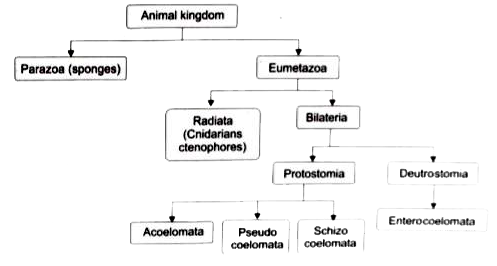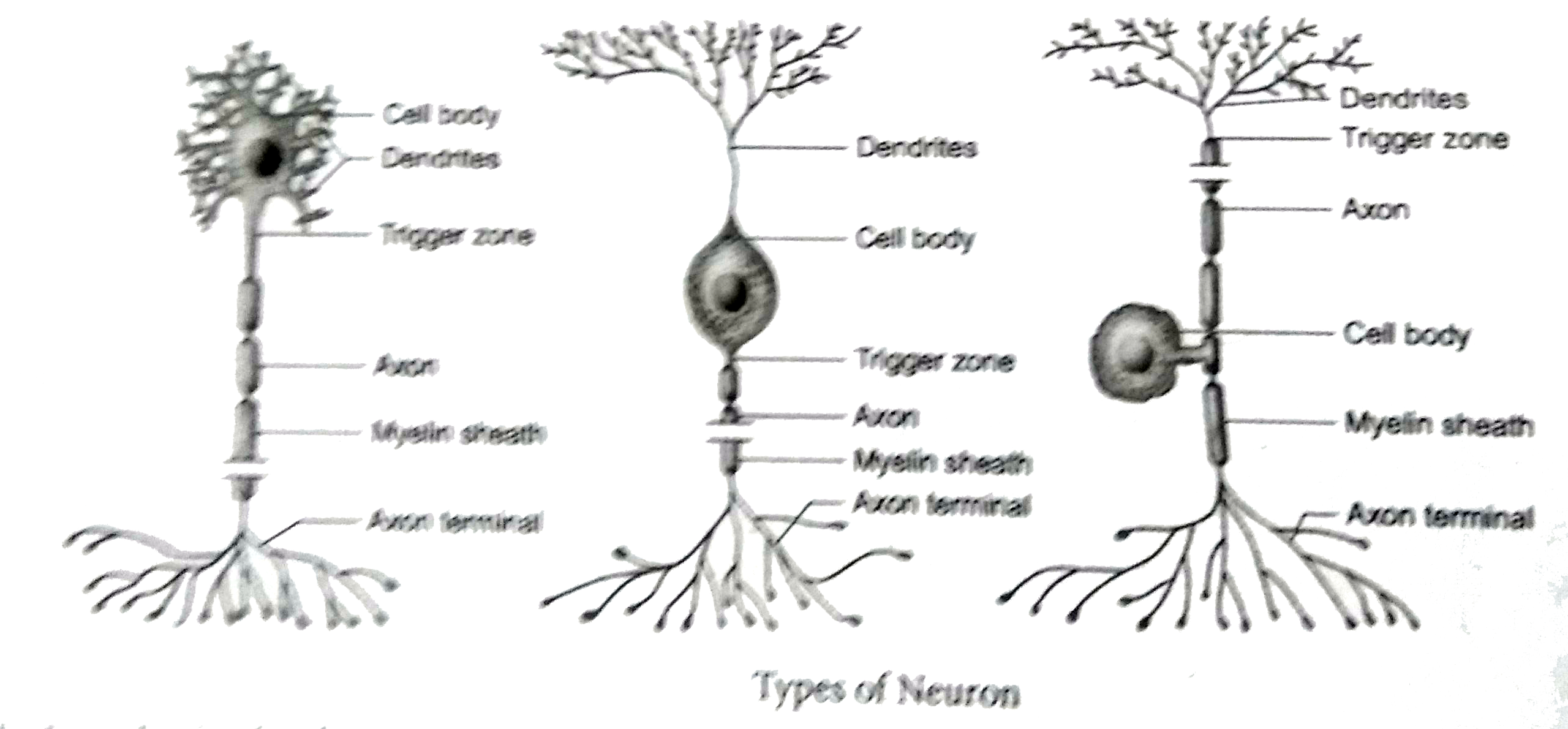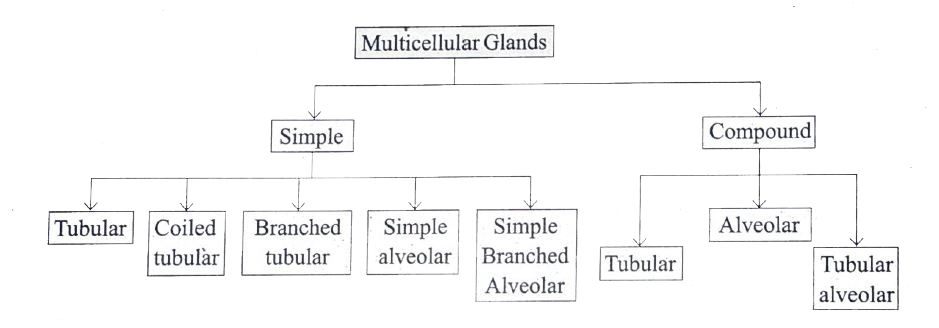InterviewSolution
This section includes InterviewSolutions, each offering curated multiple-choice questions to sharpen your knowledge and support exam preparation. Choose a topic below to get started.
| 19451. |
Question : Classify the following plants in to long day plants, short day plants and day neutral plants, Wheat, sunflower, maize, tobacco, oats, chrysanthemum, |
|
Answer» Solution :Long Day plants - Wheat, OATS. Short Day plants - TOBACCO, chrysanthemum. Day NEUTRAL plants - SUNFLOWER, maize. |
|
| 19452. |
Question : Classify the following fruits: (a) Pterocarpus (b) Aristolochia (c) Strawberry (d) Abutilon |
|
Answer» Solution :(a) Pterocarpus - Samara (Dry indehiscent fruit) (B) Aristolochia - Septicidal capsule (Dry dehiscent fruit) (c) STRAWBERRY - ACHENE (Dry indehiscent fruit) (d) Abutilon - CARCERULUS (Schizocarpic fruit) |
|
| 19453. |
Question : Classify the following as gametophyte or sporophyte generation. |
|
Answer» Solution :Thallus of MARCHANTIA - GAMETOPHYTE generation Spore of Funaria - Gametophyte generation Plant of Pteridophytes - Sporophyte generation Prothallus of Adiantum - Gametophyte generation Zygote of SELAGINELLA - Sporophyte generation MICROSPORE of selaginella - Gametophyte generation Pollen of cycas - Gametophyte generation EMBRYO of pinus - Sporophyte generation |
|
| 19454. |
Question : Classify the flowers based on the position of thalamus giving an example each. |
|
Answer» Solution :(a) HYPOGYNOUS flower- gynoecium occupies the highest position while the other parts are situated below it. Eg: MUSTARD, brinjal. (b) Perigynous flower : gynoecium is situated in the centre and other parts of the flower are located on the rim of the thalamus almost at the same level. e.g. PLUM rose. (c) Epigynous FLOWERS - margin of the thalamus grows upward enclosing the ovary completely and getting fused with it, the other parts of flower arise above the ovary. Eg. guava and CUCUMBER. |
|
| 19455. |
Question : Classify the anthers based on their mode of attachment. |
|
Answer» Solution :1. Basifixed: (INNATE) Base of anther is attached to the tip of filament, e.g., Brassica, Datura 2. Dorsifixed: Apex of filament is attached to the DORSAL side of the anther. e.g. Citrus, Hibiscus 3. Versatile: Filament is attached to the anther at midpoint. e.g., GRASSES 4. Adnate: Filament is continued from the base to the apex of anther. e.g. Verbena, RANUNCULUS, Nelumbo. |
|
| 19456. |
Question : Classify the animals based on the body cavity. |
|
Answer» Solution :The cavity between the body WALL and the GUT wall is called coelom. In some animals, the body cavity is not fully lined by the mesodermal epithelium. The mesoderm is formed as scattered pouches between the ectoderm and endoderm. Such a body cavity is called a pseudocoel. The animals which have pseudocoel e.g. round worms. If the coelom develops within the mesoderm and is lined by mesodermal epithelium it is called eucoelom. The animals which have true coelom are called eucoelomates. If the body cavity is formed by SPLITTING of mesoderm, the animals are called schizocoelomates. EG., Annelids, arthropods and molluses. If the body cavity is formed from the mesodermal pouches of archenteron, the animals are called enterocoelomate animals, e.g., echinoderms, hemichordates and chordates. |
|
| 19457. |
Question : Classify the animal kingdom. |
Answer» SOLUTION :
|
|
| 19458. |
Question : Classify the adaptive traits found in organisms. |
|
Answer» Solution :Adaptation is a dynamic evolutionary process that fits organisms to their enviroment and enhancing their evoutionary enviroment and enhancing their evolutionary fitness. The adapive traits may be classified as i. Structuaral adaptation Behavioural adaptation and physiological adaptation. i. Structural adaptations : a. The external and internal structures of animals can help them to adap better to their environment. Eg. Mammals grow thicker fur to survive freezing climates. b. Some adaptations in naturre occur for reasons of crypiss (Eg. camouflage) and mimicry. Cryptic animals are those which camouflage perfectly with their enviroment and are almost impossible to DETECT. Eg. Chameleons. This helps in prey capture or to evadepredators. Horse legs are suitable for fast running and adapted for grassland and similar terrestrial enviroments iii. Behavioural adaptaions : a. Action and behaviour of animals are insinctive or learned. Animals develop certain behavioural traits or adaptations for survival. Eg: Fleeing from a predator, hiding during sleep, seeking refuge from climate change or moving to find DIFFERENT food sources are all behavioral adaptations. b. The two most characteristic forms of behavioral adaptations are migration and courtship. Migration allows the animals to find better resources or evade threat. Courthship is a set of behavioral paatterns to find a mate to reproduce. Most nocturnal animals remain undeground or inactive during DAYTIME. This is a modification of activity and behaviour. Physiological adaptation : a. These are adaptations of organisms that help them to live and survive in their environment with unique niches. Eg: Lions have sharp canines to hunt and tear meat and a digestive system suitable for digesting raw meat. b. Two well-known physiological adaptations are hibernation and aestivation. These are two different types of inactive where the metabolic rate slows down so much that the ANIMAL can survive without eating or drinking. c. HENCE organisms have to evolve appropriate adaptations to select suitable habitats and niches. |
|
| 19459. |
Question : Classify Tetrapoda into classes |
|
Answer» SOLUTION :CLASS Amphibia Class Reptilia Class Aves Class MAMMALIA |
|
| 19460. |
Question : Classify seeds based on their cotyledons. |
|
Answer» SOLUTION :Based on the NUMBER of cotyledons present, two TYPES of SEEDS are recognized. (i) Dicotyledonous seed: Seed with two cotyledons. (ii) Monocotyledonous seed: Seed with ONE cotyledon. |
|
| 19461. |
Question : Classify ribosomes with an example. |
|
Answer» SOLUTION :Types of Ribosomes 1. 70S Ribosomes (subunit 30S and 50S) 3RNA molecule (i) 16SrRNA in 30S subunit. (ii) 23S and 5S in 50S large subunit. (Prokaryotic CELLS of blue green algae, Bacteria, MITOCHONDRIA and Chloroplast of many algae and higher plants). 2. 80S Ribosomes (subunits 40S and 60S) 4RNA molecule (i) 18Sr RNA in 40S small SUB unit (ii) 28S, 5.8S and 5S in larger 60S subunit. (EUKARYOTIC cells of plants and animals). |
|
| 19462. |
Question : Classify receptors based on type of stimuli. |
Answer» SOLUTION :
|
|
| 19463. |
Question : Classify plastids on the basis of type of pigments found in them. State the function of each type. |
| Answer» Solution :CHLOROPLAST: CHLOROPHYLL – to trap sunlight for photosynthesis. Chromoplasts : fat soluble carotenoids – gives yellow, orange or red COLOUR to parts of plants (fruits, flowers etc.) Leucoplasts: colourless plastids – store nutrients, Amyloplasts (starch), elaioplasts (oils), aleuroplasts (proteins). | |
| 19464. |
Question : Classify plastids based on storage & mention their storage component. |
Answer» SOLUTION :
|
|
| 19465. |
Question : Classify polysaccharides based on function. |
| Answer» SOLUTION :DEPENDING on the FUNCTION, polysaccharides are of TWO types-storage POLYSACCHARIDE and structural polysaccharide. | |
| 19466. |
Question : Classify plastids based on colour. |
| Answer» SOLUTION :CHLOROPLAST, Phaeoplast and Rhodoplast. | |
| 19467. |
Question : Classify plasmides based on function. |
| Answer» SOLUTION :PLASMIDS are classified into different types based on the function. Some of them are F (Fertility) factor, R (RESISTANCE) plasmids, Col (Colicin) plasmids, RI (Root inducing) plasmids and Ti (Tumor inducing) plasmids. | |
| 19468. |
Question : Classify plants based on habit. |
| Answer» SOLUTION :BASED on habit plants are classified into HERBS, SHRUBS, climbers (VINES) and trees. | |
| 19469. |
Question : Classify plants based on habitat. |
|
Answer» SOLUTION :Depending upon where PLANTS grow habitats MAY be classified into major categories : 1. Terrestrial and 2. Aquatic. |
|
| 19470. |
Question : Classifyphotosyntheticbacteriaand give example . |
|
Answer» SOLUTION :PHOTOSYNTHETICBACTERIA are classifiedinto three groups : 1. Grenn sulphurbacteria are classifedintothree groups : 2. Purplesulphurbacteria . Example:Thiosphirillum and CHROMATIUM . 3 . Purple NON- sulphurbacteria . Example: RhodopseudomonasandRhodospiriullum |
|
| 19471. |
Question : Classify organisms on the basis of seven kingdom system. |
Answer» SOLUTION :
|
|
| 19472. |
Question : Mention the Subdivisions of the seven kingdom classification. |
Answer» SOLUTION :
|
|
| 19473. |
Question : Classify neurons on the basis of number of axon and dendrites. |
|
Answer» Solution : The NEURONS are divided into three types BASED on number of axon and dendrites they possess: 1. MULTIPOLAR neurons have many processes with one axon and two or more dendrites. They are mostly interneurons. 2. Bipolar neurons have two processes with one axon and one dendrite. These are found in the retina of the eye, inner ear and the olfactory area of the BRAIN. 3. Unipolar neurons have a SINGLE short process and one axon. Unipolar neurons are located in the ganglia of cranial and spinal nerves.  . .
|
|
| 19474. |
Question : How are meristerms classified based on function . |
|
Answer» Solution :Based on function, meristems are classified into 3 TYPES 1. Periderm giving RISE to epidermis. PROCAMBIUM giving rise to primary vascular tissues. GROUND meristem giving rise to CORTEX a pitch. |
|
| 19475. |
Question : Classify multicellular exocrine glands based on their structure. |
Answer» SOLUTION :
|
|
| 19476. |
Question : Classify meristem based on position with a simplified diagram. |
|
Answer» Solution :1. Apical meriste : Present in APICES of ROOT and plant, it is called as primary growth. 2. Intercalary meristem : Occurs between the MATURE TISSUES. It responsible for elongation of internodes. 3. Lateral meritem : Occurs along the longitudinal axis of stem and root. It is reponsible for SECONDARY tissues and thickening of stem and root. Example : vascular cambium and cork cambium. 
|
|
| 19477. |
Question : Classify lichens based on morphology. |
|
Answer» SOLUTION :Leprose - Absence of DISTINCT fungal layer Crustose - Crust-like FOLIOSE - Leaf-like FRUTICOSE - BRANCHED pendulous shrub-like |
|
| 19478. |
Question : Classify lichens based on habitat. |
Answer» SOLUTION :
|
|
| 19479. |
Question : How are multicellular exocrine glands classified based on their mode of secretion? |
Answer» SOLUTION :
|
|
| 19480. |
Question : Classify earthworms based on their ecological strategies. |
|
Answer» SOLUTION :Earthworms are CLASSIFIED as epigeics, anecies and endogeics based on their ECOLOGICAL strategies • Epigeics are the surface dwellers c.g., Perlovyx excavatus and Endrilus eugeniae. • Anecics are found in the UPPER layers of the soil eg.. LAMPITO Mauritii, Lumbricus Terrestris. • Endogeies are found in deeper layers of the soil e.g. Oclochaetonathurstoni. |
|
| 19481. |
Question : Explain compound epithelium. |
Answer» SOLUTION :
|
|
| 19482. |
Question : Classify collenchyma based on cell wall pectinisation. |
| Answer» SOLUTION :ANGULAR COLLENCHYMA, LACUNAR collenchyma, lamellar collenchyma, ANNULAR collenchyma. | |
| 19483. |
Question : Classify chromosomes based on function. |
| Answer» SOLUTION :AUTOSOMES and SEX CHROMOSOMES. | |
| 19484. |
Question : Classify bacteria based on the number and position of flagella. |
|
Answer» Solution :(1) Peritrichous - Many flagella arising from various points on the SURFACE of the cell. (2) AMPHITRICHOUS - With tufts of flagella at two opposite ends. (3) Lophotrichous - With a tuft of flagella at one point (end) (4) Monotrichous - With a single POLAR flagellum. (5) Atrichous - WITHOUT flagella. |
|
| 19485. |
Question : Classify buds based on their origin & function. |
| Answer» Solution :Basedon ORIGIN, buds are classified into (a) Terminalor Apical bud and (B) Lateral or Axillary or Axil bud . BASED on function , budsare classified into(a) Vegatative bud and(b) Floral or Reproductive bud . | |
| 19486. |
Question : Classify animals based on coelom. |
|
Answer» Solution :The cavity between the BODY wall and the gut wall is called coelom. If the animals do not have coelom, they are called aoeomates. E.g., flatworms. In some animals, the body cavity is not FULLY lined by the mesodermal epithelium. The mesoderm is formed as scattered pouches between the ectoderm and endoderm. Such a body cavity is called a pseudocoel. The animals which have pseudocoel e.g.round worms. If the coelom develops within the mesoderm and is lined by mesodermal epithelium it is called eucoelom. The animals which have true coelum are called EUCOELOMATES. If the body cavity is formed by splitting of mesoderm, the animals are called schizocoelomates e.g., ANNELIDS, arthropods andmolluses. If the body cavity is formed from the mesodermal pouches of archenteron, the animals are called enterocoelomate animals.e.g. ECHINODERMS, hemichordates and chordates. |
|
| 19487. |
Question : Classify and explainthe typesof angiospermicwoods basedon diameterof xylemvessels . |
|
Answer» SOLUTION :On the basis of diameterof xylem vessels, twomain TYPESOF angiosperm woods are recognised. 1. Diffuse porous woods : Diffuse porouswoods are woodsinwhichthe vessels or poresarerather uniformin size and DISTRIBUTION throughout an annualring . EXAMPLE:Acer 2 . Ring porouswoods :The poresof the early wood aredistinctly larger than thoseof the late wood . Thus rings of wide and narrow vesselsoccur . Example : Quercus . |
|
| 19488. |
Question : Classify and explain the plants based on photoperiodism. |
|
Answer» Solution :i. Long day plants: The plants that required long critical day length for flowering are called long day plants or short NIGHT plant. Example : PEA, Barley and Oats. ii. Short long day plants: These are long day plants but should be exposed to short day lengths during EARLY period of growth for flowering. Example : Wheat and Rye. iii. Short day plants : The plants that require a short critical day length for flowering are celled short day plants or long night plants. Example : Tobacco, Cocklebur, Soybean, Rice and Chrysamthemum. iv. Long short day plants : These are actually short-day plants but they have to be exposed to long days during their early periods of growth for flowering. Example : Some SPECIES of Bryophyllum and Night jasmine. v. INTERMEDIATE day plants : These require a photoperiod between long day and short day for flowering . Example : Sugercane and Coleus. vi. Day neutral plants: There are a number of plants which can flower in all possible photoperiods. They are also called photo neutrals or indeterminate plants. Example : Potato, Rhododendron, Tomato and Cotton. |
|
| 19489. |
Question : Classification which is based only on morphological characters is called |
|
Answer» ARTIFICIAL SYSTEM |
|
| 19490. |
Question : What is photoperiodism. How are plants classified based on photoperiodism? |
|
Answer» Solution :i. Long day plants: The plants that require long critical day LENGTH for flowering are called long day plants or short night plants. Example: Pea, Barley and Oats. ii. Short long day plants: These are long day plants but should be exposed to short day lengths during early period of growth for flowering. Example: WHEAT and Rye. iii. Short day plants: The plants that require a short critical day length for flowering are called short day plants or long night plants. Example: Tobacco, Cocklebur, SOYBEAN, Rice and Chrysanthemum. iv. Long short day plants: These are actually short-day plants but they have to be exposed to long days during their early periods of growth for flowering. Example: Some species of Bryophyllum and Night jasmine. v. Intermediate day plants: These require a photoperiod between long day and short day for flowering. Example: Sugarcane and Coleus. vi. Day neutral plants: There are a number of plants which can flower in all POSSIBLE photoperiods. They are also called photo neutrals or indeterminate plants. Example: Potato, Rhododendron, Tomato and Cotton |
|
| 19491. |
Question : Classification which is based on evolutionary relationships of various organism is |
|
Answer» Artifical |
|
| 19492. |
Question : Classification of animals is based upon all of the following except : |
|
Answer» level of organisation |
|
| 19493. |
Question : Classification of sponges is primarily based on the ……………….. . |
|
Answer» BODY ORGANIZATION |
|
| 19494. |
Question : Classification of organisms is necessary. |
| Answer» SOLUTION :Classification of organisms is necessary to RECOGNISE, identify then and DIFFERENTIATE CLOSELY related species. | |
| 19495. |
Question : Classification is a essential part of biology - Justify. |
| Answer» Solution :Classification is essential to BIOLOGY because there is a vast diversity of organisms to sort out and compare. UNLESS they are organized into MANAGEABLE CATEGORIES it will be DIFFICULT for identification. | |
| 19496. |
Question : Classification for flowering plants was given by |
|
Answer» R.H Whittaker |
|
| 19497. |
Question : Classification based on protein content is called ……………………….. . |
|
Answer» SEROTAXONOMY |
|
| 19498. |
Question : Classification based on cytological information like chromosome number, structure and behaviour is called |
|
Answer» NUMERICAL Taxonomy |
|
| 19499. |
Question : Classification based on cytological information, chromosome number etc. called |
|
Answer» chemotaxonomy |
|
| 19500. |
Question : Class : What is Class ? |
|
Answer» Solution :CLASS includes related ORDERS. For example, ORDER Primata comprising monkey, gorilla and gibbon is placed in class Mammalia along with order Carnivora that includes animals LIKE tiger, CAT and dog. Class Mammalia has other orders also. |
|